7.4 /10 1 Votes
7/10 IGN Developer Psygnosis Genre Racing video game | 79% Metacritic Initial release date 19 January 2012 Series Wipeout | |||||||||||||||||||||||||||||||||
 | ||||||||||||||||||||||||||||||||||
Publishers Sony Interactive Entertainment, Sony Computer Entertainment Europe Similar Wipeout games, Psygnosis games, Racing video games | ||||||||||||||||||||||||||||||||||
Cgrundertow wipeout 2048 for playstation vita video game review
Wipeout 2048 is a futuristic racing video game developed by Sony Studio Liverpool and published by Sony Computer Entertainment as a launch title for the PlayStation Vita. It was released on 19 January 2012 in Japan and on 22 February in Europe and North America. The game, the ninth installment of the Wipeout series, was the last developed by Studio Liverpool before its August 2012 closure. Wipeout 2048 is a prequel to the first game in the series, and is set in 2048, 2049, and 2050. In the game, players pilot anti-gravity ships around futuristic race tracks.
Contents
- Cgrundertow wipeout 2048 for playstation vita video game review
- Gameplay
- Conception
- Design
- Reception
- References
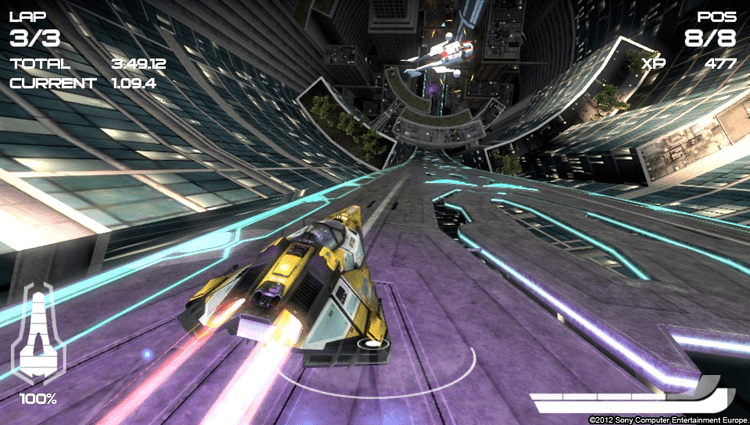
Developed with the PlayStation Vita, it was a testbed for the console. During development, Studio Liverpool staff sent feedback to Sony about how the game would play on the new console and some said that they had influenced the Vita's design. Changes included a rear touchscreen device and two separate analogue sticks; both, not originally conceived by Sony, eventually made it onto the console.
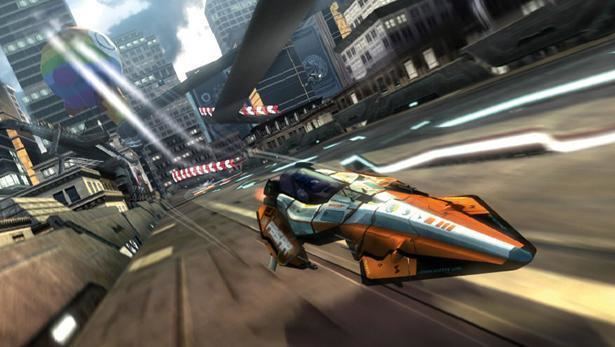
Wipeout 2048 preserves some technical aspects of predecessor Wipeout HD, including downloadable content, online multiplayer mode, and cross-platform play with PlayStation 3 owners of Wipeout HD. The game received mainly positive reviews; critics agreed that its graphics and visuals showcased the PlayStation Vita, but criticised its long loading time and other technical issues.
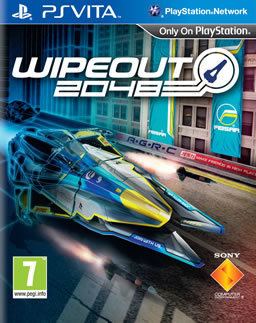
Gameplay
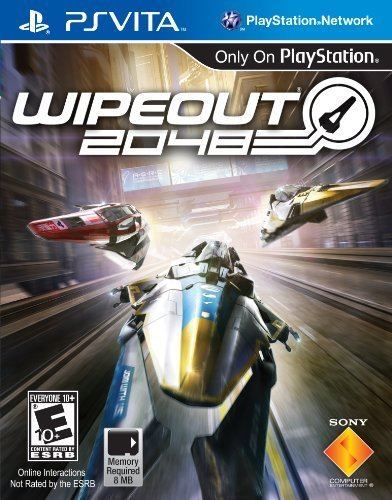
Wipeout 2048 is a racing game in which involves players pilot anti-gravity ships through a variety of races. Set primarily in the year 2048, it takes place earlier in the Wipeout timeline than previous games and acts as a prequel; dedicated race tracks have not yet been built, and races are held on city streets. The single-player game progresses through the first three years of the AGRC (Anti-Gravity Racing Championships): 2048, 2049 and 2050. The game has four types of ships: speed ships, agility ships, fighters and prototypes. Speed ships (lightweight, Formula 1-like vehicles which emphasise acceleration and momentum) are primarily used for speed-oriented races, such as time trials. Agility ships, similar to rally cars, have increased manoeuvrability and handling; fighter ships are heavily-armoured craft which sacrifice speed for combat power.

The game has a variety of weapons, which may be picked up during a race by flying over different-coloured weapon pads. Yellow pads equip the player with offensive weaponry to destroy other races, and green pads provide defensive weapons such as mines, shields and speed boosts. Game modes carried over from Wipeout HD include one-on-one races, tournaments, time trials, speed laps and Zone mode, in which a player's ship automatically accelerates to a high speed.
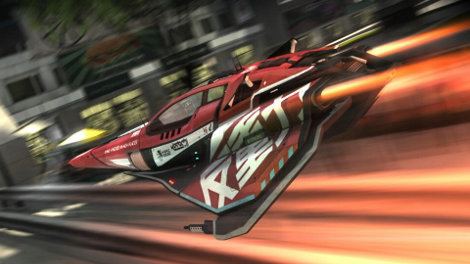
Online multiplayer mode has the same races and modes as single-player. The game features cross-platform online racing, allowing players of the PlayStation 3 version of Wipeout HD Fury to play the Fury tracks with the handheld console. It has downloadable content (DLC), with HD/Fury offering more tracks and ships for cross-play.
Conception
Wipeout 2048 was developed by Sony Studio Liverpool, formerly known as Psygnosis. According to Studio Liverpool technical director Stuart Lovegrove, the game was developed in parallel with the PlayStation Vita and was a testbed for the console. Lovegrove was aware that the next Wipeout game would be a launch title, and said that it was something Studio Liverpool had done before. Chris Roberts, the game's director of graphics, tools and technologies, said that Sony Computer Entertainment involved the Liverpool studio early in the development of the PlayStation Vita and they had a "fairly good idea" of the console's capability. Jon Eggleton, former senior artist of the Wipeout series, said in a retrospective interview that Studio Liverpool influenced the Vita's design. When staff were given development kits for what was called a "next-generation portable", a group was formed to brainstorm hardware details; proposals included a touchscreen device, not yet conceived by Sony. Eggleton speculated that the console was released with two analogue sticks solely because "Studio Liverpool said it needed two sticks". During early development of Wipeout 2048 and the PlayStation Vita, the studio provided Sony with feedback on the hardware and libraries and sent updated application code to Sony's firmware staff for testing their compilers.
Design
The development team recognised the differences between creating a game for the PlayStation Vita and the PlayStation 3. Lovegrove said that designing the game for the Vita's smaller screen made it easier to develop, alleviating "old problems" with designing a game targeted for an HD screen, but the studio had to ensure that the game could run at any resolution. Roberts agreed, saying that "it [was] less of a headache for artists" who wanted to tweak lighting effects. Asked about major differences between the PlayStation 3's RSX Reality Synthesizer graphics processing unit (GPU) and the PlayStation Vita's ARM architecture, Roberts said that the "most obvious" difference was the Vita's lack of stream processing units (SPU). He said that that most of Wipeout HD's SPU code was directed towards GPU support, which included features such as geometry culling, lighting effects and rendering. According to Roberts, the Vita's GPU and ARM architecture were more capable and handled Wipeout 2048 "very well". Lovegrove, who had worked with ARM architecture on the BBC Micro, said that the team did not have to optimise anything to accomplish their goals and it was enjoyable to see the same architecture running the game.
Although Wipeout 2048 and Wipeout HD have a shared shader program and did not require retooling for the Vita's architecture, Roberts said that a "great deal" of time and attention was spent fine-tuning the game's shader effects for the Vita's GPU. Lovegrove thought that the method of working on a PlayStation 3 and its handheld counterpart was identical (a sentiment generally shared by the team), and Roberts said that the systems' similarities helped the team "get moving quickly". In addition to the shader effects, Roberts said that the game's lighting system was identical to that of Wipeout HD; both games' ships shared image-based lighting, with blended diffuse and specular highlights effects and the vertex-based lighting system used for weaponry. According to Roberts, the main difference between the games was PlayStation Vita's utilisation of the effects via the GPU; PlayStation 3 relied on SPUs. The team decided to use anti-aliased colour buffers for real-time shadow rendering, instead of depth buffers. This gave the game greater transparency effects, since the memory cost of anti-aliasing was 8 bits per pixel; therefore, 4x MSAA (multisample anti-aliasing) buffers contained the same amount of memory as a 32-bit depth buffer. Another feature which Roberts considered an improvement was tone mapping (partly due to Vita's superior support of buffer formats), which gave Wipeout 2048 better exposure control and bloom effects.
To accommodate the game's visual fidelity, the team compromised on frame rate. Roberts said that the decision was made early in development, since they initially expected that the PlayStation Vita could run PlayStation 3 assets at 30 Hz. The team used existing code from Wipeout HD as a "starting point" to make the development process more efficient; the art and technical teams of Studio Liverpool worked in parallel. Lovegrove agreed that 30 frames per second was always the goal for the game, since the team wanted to prioritise visual quality. In a Eurogamer interview, Roberts said that Studio Liverpool were one of the first developers to use a dynamic framebuffer on the PlayStation 3: an algorithm which reduces resolution when the game engine is stressed, maintaining performance and optimising frame rate. The technique, known as resolution throttling, was carried over from Wipeout HD to Wipeout 2048: "If you are dead set on locking frame-rate and resolution your whole game is (graphically) restricted by the worst-case scenario".
Wipeout 2048 was released as a launch title for the PlayStation Vita in early 2012. In 2010 Sony Computer Entertainment restructured Studio Liverpool as part of a "project prioritisation" of Sony's global assets, and several of the studio's upcoming projects were cancelled. At the time of their closure, the Liverpool studio were reportedly working on a Wipeout title for the PlayStation 4 and a Splinter Cell-style game; the unnamed Wipeout game had been in development for 12 to 18 months.
Reception
Wipeout 2048 received generally-positive reviews. It has an average score of 79 percent at Metacritic, based on an aggregate of 63 reviews, and was Metacritic's 20th-highest-ranked PlayStation Vita game of 2012. The game was nominated in the Best Handheld Game category at the 2012 Golden Joystick Awards.
Critics praised Wipeout 2048's graphics and visuals, calling them a showcase for the PlayStation Vita's power. Cam Shea of IGN enjoyed the game's detail and depth but questioned its visual design, saying that the game's darker environments and cluttered worlds made the tracks ambiguous and less readable. Adam Goodall of Gameplanet called the graphics "stunning" and said that the game had a "surprising presence" of a pervasive artistic statement, an aspect he considered rare in video games (particularly racing games). According to Digital Spy's Mark Langshaw and GamesRadar's Kathryn Bailey, the game's backdrops were superior to Wipeout HD; Langshaw said that they showcased the PlayStation Vita's "graphical prowess". David Meikleham of the Official PlayStation Magazine wrote that Wipeout 2048 "brilliantly shows off" the new hardware with its "pretty" lighting effects, solid frame rate and "gorgeous" colours, and Dan Ryckert of Game Informer said that its fast-paced races "do a good job" of displaying the Vita's graphical capabilities. Frédéric Goyon of Jeuxvideo.com liked the game's utilisation of the PlayStation Vita's OLED screen, although he saw little difference between the graphical enhancements of Wipeout 2048 and Wipeout HD. According to Goyon, the game was "fluid in all circumstances" and was essentially Wipeout HD on a smaller screen. Heath Hindman of Game Revolution said that although it "really shows off" the PlayStation Vita's graphical power (along with Uncharted: Golden Abyss, another launch title), the game's sight distance was limitated. Wipeout 2048's track design was largely praised. Simon Parkin of The Guardian enjoyed its "wholly contemporary" track details and visual consistency with previous installments, and Peter Willington of Pocket Gamer called the game's track design the best in the series. According to Sebastian Haley of VentureBeat, Wipeout 2048 would have benefited from a "slightly braver" track design.
Willington noted that the game's visuals experienced aliasing, and Wipeout 2048 was "undercutting the point" of Wipeout HD (a PlayStation 3 title). An Edge reviewer also called its visuals less exciting than the Wipeout series' typical science-fiction setting, noting that Studio Liverpool "rewinds the timeline" to a less futuristic, more relatable setting. Martin Gaston of VideoGamer.com said that Wipeout 2048 featured a different (not inferior) aesthetic design from the other games due to its "closer to home", near-future setting. According to GameSpot's Mark Walton, the game's smooth, beautiful visuals gave the player a "real feeling of speed" and provided "breathtaking vistas" but was somewhat lacking in innovation. Paul Furfari of UGO enjoyed Wipeout 2048's visual style, calling it the only showcase for the PlayStation Vita's raw power. He singled out the Tron-like visual presentation of the Zone mode and the game's generally-solid frame rate. Dale North of Destructoid said that the series consistently showcased the system on which they were released and Wipeout 2048 was a "nice" launch title for the PlayStation Vita. North called it a "beautiful game"; "as fast and flashy as its predecessors", it "really impresses" on the PlayStation Vita's high-resolution screen and the ships and futuristic backdrops seem to "pop right off the screen". Sebastian Haley of VentureBeat wrote that the game adheres to the familiar, high visual standard set by previous Wipeout installments.
Although its gameplay was mainly well-received, the game's long loading times were criticised. Jeff Gerstmann of Giant Bomb noted Wipeout 2048's technical issues, particularly its "insane" loading times. Ian Dransfield of Play praised the game's replay value and multiplayer functions: "It's the sort of game you’ll find yourself coming back to again". IGN's Cam Shea called the 30-second loading times frustrating "when all you want to do is race". Gameplanet's Adam Goodall also criticised the loading times, saying that wait times for single- and multiplayer events were 30 to 60 seconds and up to 10 minutes for online sessions. Although Goodall described the long loading times as "awful", they were not enough to make the game a failure and he called the overall gameplay experience "deeply satisfying". GamesRadar's Kathryn Bailey said that the game's online mode was well-executed, highly accessible and a "credit to Wipeout." She said that its user interface appeared clean and "shiny", and called the touchscreen-based menu system "a pleasure to behold". The Guardian's Simon Parkin criticised the game's protracted loading times; a pause at least twenty seconds too long had a negative effect in the era of "insta-fix mobile gaming on the rival platforms". David Meikleham called Wipeout 2048's balanced difficulty "consistently excellent", praising its long campaign as "surprisingly hefty" and not an "on-the-go time-waster". Critics enjoyed the game's use of the PlayStation Vita's analogue control sticks. Jeuxvideo.com's Goyon praised the game's optimisation of the Vita's gyroscope and touchpad features and the "extremely effective" analogue stick. According to Parkin, the game's technical impediments made it a learning curve for the developers; he thought that they did not intend to reduce the manoeuvrability of the PlayStation Vita's analogue stick, in contrast to Wipeout HD. Digital Spy's Mark Langhsaw found the PlayStation Vita's analogue stick smooth and responsive, although he questioned its accessibility for players unfamiliar to the series. He enjoyed the game's use of the console's gyroscope and touchpad to manoeuvre and collect power-ups, respectively, but said that the touchpad did not have the same level of accuracy as its physical alternative. Game Informer's Dan Ryckert considered the game's replay value moderate; although its analogue stick did a "good job" of controlling the ships, it had a noticeable lack of traction.
According to Hindman, the game would have benefited from a customisable control configuration and the three pre-made default setups were unsatisfactory. Willington found the "lengthy" load times an issue which "plagues" the game, "totally at odds" with the normal pace of gameplay. However, he called Wipeout 2048 the series' best handheld game and praising its "tight" controls and variety of content. Edge's reviewer praised the multiplayer mode, saying that it "adds weight and value to the package" and gave a "unique slant" to the Vita’s online potential. Gaston said that the loading times were "simply unforgivable"; he routinely waited over 50 seconds after selecting a race to start it, which minimised the ability to comfortably play the game "on the go". Walton also found the long loading times infuriating in a handheld game, and said that having to wait more than 40 seconds to start a race was far longer than it should have been. Although Furfari found that the game had one of the longest loading times on the PlayStation Vita, it was not a "deal breaker" and Wipeout 2048 was one of the few racing titles for the console that he recommended. Although Haley noted the game's "hefty" loading times, he said that was a common feature in PlayStation Vita launch titles. Shea and Bailey noted the game's reduced frame rate of 30 frames per second, a "step down" from the franchise's "traditional" 60 frames per second. Gerstmann thought that the frame rate occasionally affected gameplay and speed, but the game was mostly stable.
